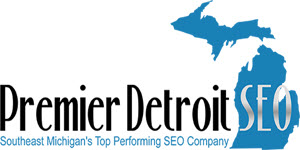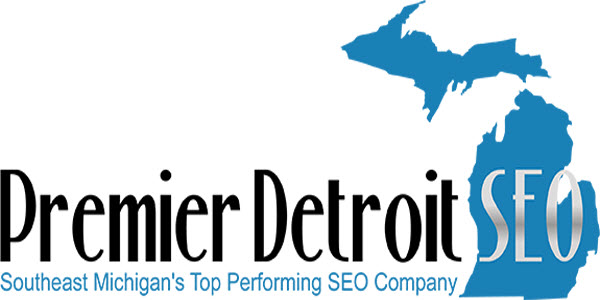Websites are the digital storefronts and facades of the 21st century. Yet, the rules for how and why people see your storefront are vastly different from the rules of a physical storefront.
You can’t just plant your store in some prime location and rely on walk-by and drive-by traffic.
You are bound by the restraints of digital advertising and search engines.
So, it’s important you know how to leverage these tools. It’s important to know how to optimize your business website.
In this article, we will take a quick look at some simple things you can do right now to make this happen.
1. Set Goals For Your Business Website
81% of consumers go online to make purchasing decisions. And if you want to capture and convert those numbers to dollars, you will need to set goals for your business website.
The more traffic you see on your website, the more you will see conversions.
So set an increased traffic goal for your website or landing page.
It’s like setting financial goals for your business.
Use projected data from your current traffic and account for improvements you make to your website. Then you can place a realistic bar to hurdle.
2. Make Your Website User-Friendly
Every piece of consumer technology boasts of being user-friendly. Of course, Apple was the trendsetter here with the Mac OS back in the 90s.
But not every website is user-friendly.
You may have encountered websites where navigation between pages is a mess.
You don’t want to be one of those websites. So, here are a few things to remember when building your business website.
a. Make Navigation Simple
Unlike a physical store, your customers don’t always enter through the front door.
Imagine your business website like a castle without corridors. Each needs a way to access every other room.
Easily found links are the magic portals that will facilitate this need.
Make sure that if you include hidden navigation menu the button is in an obvious location.
Usually, websites with great navigation design will place their menu button at the top of the page.
b. Make Your Text Readable
If the majority of the population has to squint to see your content, then you’re not going to see repeat traffic.
Readability depends on a few elements.
A plain, non-distracting background is imperative.
You might feel like a photo of your physical store would be a great background for every page. But the mind can only focus on one thing at a time.
And if you include a complicated image in your background design, you’ll exhaust your reader’s brains.
Their mind will be constantly shifting between the words on the page and the image in the background. And they will not retain one bit of your content.
Size matters. At least it does for fonts.
The perfect font size is 16 pixels for the body of your content.
And pick a font that is readable in and of itself.
If you Google “Best Website Fonts” you’re likely to find any number great type fonts. And many of them are actually free!
c. Make Your Content Concise And Scannable
Basically, avoid the wall of text.
Reading on the web is a lot different than reading on paper.
When people go to the web, they scan content. And you want the information on your business website to be accessible.
If you opt for walls of text or even paragraphs of text, your customers will not find the information they need quickly.
And if they can’t find the information they need quickly, they will go somewhere else. Your competitor, perhaps?
So, if you are unsure as to whether your content is scannable, use the Hemmingway App. It’s a free resource for content writers.
And the app judges how concise and scannable your content is.
d. Don’t Hide The Hyperlinks
Nobody will follow a corridor they can’t see. Same with hyperlinks.
Most people aren’t roaming your content with their cursor. And that’s assuming they use a cursor anymore.
Make sure that your hyperlinks are obvious within your text.
They should be in a different color than the rest of your text. And they need an underline.
And only use this color and underline technique for hyperlinks.
If you use it for emphasizing other content on your page, users will feel like you’re crying wolf.
3. Re-hashed Or Copied Content Will Sink You
Google focuses on providing quality and useful content for their users.
Your job as a business website owner is to provide that fresh and useful content.
If you’re re-using old content without changing it up or copying from other websites, you’ll see your website rankings go down.
Ultimately, one of the greatest pillars of contemporary SEO is fresh content.
Regular postings of fresh content will not only please repeat customers. It will help your rankings on Google.
And be sure to link up to your fresh content where ever you can.
If you don’t have a social media account, get one. You don’t want to miss out on opportunities to share your content with your customer base.
And the links on social media do count for search engine optimization.
So, if you’re creating fresh content and people share it on social media, you’ll benefit in the long run.
4. Be Mobile Friendly
The average mobile conversion rate is up 64% over desktop business website conversion rates.
Mobile friendly websites do better than traditional websites. Period.
Most people do their business on the go now. They want to order their latte while riding their bike to work (we don’t recommend doing this. It’s dangerous).
But the point is people want mobile friendly. And if you want your bounce rate to stay low, then you need to optimize your business website for all mobile devices.
If you don’t you’ll never meet your traffic goals. And you will never see that traffic convert to dollars in your pocket.
Conclusion:
Mobile friendly, user-friendly, and fresh content. These are the pillars of a great business website.
If you’re looking to optimize your business website today, call Premier Detroit SEO today!


